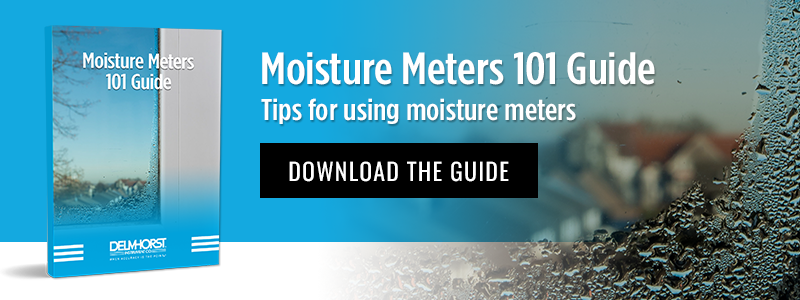Q: How Do Hay Moisture Meters Work?
Hay moisture meters use the principle of electrical resistance to determine moisture content in different types of hay. Because moisture conducts electricity and dry hay acts as an insulator, wet hay will let electricity through easier than dry hay, resulting in a higher reading.
When a hay moisture meter probe is inserted into hay, the hay acts as an element in an electrical circuit, reading the resistance between two points in the hay prod. The amount of resistance to this current (measured in Ohms) is used by the meter to measure how much moisture is present in the hay.
Q: How Wet or Dry Should My Hay Be?
The answer to this depends on a few things:
- Are you preparing to harvest or to bale the hay?
- What kind of baler are you using (large square, small square, round)?
- How will your hay be stored?
Balers that compact hay tightly, such as the large square and round balers, tend to require drier hay, while balers that don’t compress hay so much can usually take a bit more moisture.
The exact amount may vary, but recommendations from some organizations, such as Alberta Agriculture and Forestry, put safe baling moisture ranges for a dense, 1800-lb. bale at 12-16% moisture content, and small, 60-lb. bales at 18-20% moisture content.
Outside of these %MC ranges, farmers risk either compromising the nutritional value of their hay, or even risking spontaneous combustion.
Q: Wait, Can Hay Really Spontaneously Combust?
Yes.
When hay has too much moisture, it encourages the growth of bacteria. This growth, in turn, can lead to thermal expansion as the water in the hay heats up and tries to escape. Silos have exploded because of the pressure created during this spontaneous combustion, causing untold harm to farmers, their livestock, and their property.
This is one reason why many farmers use specialized hay moisture meters to check their bales before storing hay.
Q: What’s the Best Way to Check Hay Moisture in a Bale?
For checking moisture in large bales of hay, it’s usually best to use a hay meter with an extended-length probe—something between 18” and 36” long. Shorter probes simply won’t go deep enough into the bale to get a good measurement of the bale’s moisture content. For standard square bales, a 10” probe is usually long enough.
Also, it’s usually best to test the bale in a few different spots to make sure that there isn’t some hidden pocket of moisture that could cause problems later.
For checking moisture in the windrow, you should probably collect hay from the windrow and put it into a five or ten-gallon container. Using a multi-pin prod, such as the 831-series prod, press the prod to the hay and take a reading. Then, mix the hay and repeat three or more times.
After checking the hay in the container, select up to five large, slower-drying stems and place them one at a time across two adjacent points on the multi-pin prod and take readings of each. The average of these stem readings should be about 2-5 percentage points higher than the actual moisture content of the hay.
Q: What Can Affect Meter Readings?
Aside from the actual moisture content of hay, some factors that can affect a moisture meter reading include:
- Moisture distribution;
- Crop variety;
- Temperature;
- Crop maturity;
- Sample density;
- Overall climate (relative humidity).
Q: How Do I Know My Meter is Accurate?
Due to how quickly conditions in the field can change because of the weather and how sampling methods can alter readings, it’s important to think of moisture measurements as part of a range rather than as specific points.
However, a general level of accuracy can be established by using a moisture content standard (MCS) to make sure the meter is in calibration. This can help prevent excessively inaccurate readings.
Also, try to keep your moisture meter for hay in good working order. Doing things like storing the meter in a clean, dry place, regularly changing the batteries, and cleaning the meter and probes with a mild, biodegradable cleaner can all help keep the meter accurate.
For more information about hay moisture meters and testing moisture in hay, check out our free hay guide and other resources today!

Comments